- Home
- Neal Stephenson
Diamond Age or a Young Lady's Illustrated Primer Page 16
Diamond Age or a Young Lady's Illustrated Primer Read online
Page 16
She must be in a time zone not many hours different from Miranda’s, and she must sit there playing with that ractive storybook all day long instead of going to school like a little rich girl should. It was slim evidence to go on, but Miranda never needed much evidence to confirm her belief that rich parents were just as capable of fucking with their children’s minds as anyone.
Further experiences with the Primer;
Princess Nell and Harv in the Dark Castle.
Harv was a clever boy who knew about trolls, and so as soon as he knew that they had been locked up inside the Dark Castle by their wicked stepmother, he told Nell that they must go out and gather all the firewood they could find.
Rummaging in the Great Hall of the castle, he found a suit of armor holding a battle-axe. “I will chop down some trees with this,” he said, “and you must go out and gather kindling.”
“What’s kindling?” Nell asked.
An illustration of the castle appeared. In the center was a tall building with many towers that rose up into the clouds. Around it was an open space where trees and plants grew, and around that was the high wall that held them prisoner.
The illustration zoomed in on an open grassy area and became very detailed. Harv and Nell were trying to build a fire. There was a pile of wet logs Harv had chopped up. Harv also had a rock, which he was striking against the butt of a knife. Sparks flew out and were swallowed up by the wet logs.
“You start the fire, Nell,” Harv said, and left her alone.
Then the picture stopped moving, and Nell realized, after a few minutes, that it was fully ractive now. She picked up the rock and the knife and began to whack them together (actually she was just moving her empty hands in space, but in the illustration Princess Nell’s hands did the same thing). Sparks flew, but there was no fire.
She kept at it for a while, getting more and more frustrated, until tears came to her eyes. But then one of the sparks went awry and landed in some dry grass. A little curl of smoke rose up and died out.
She experimented a bit and learned that dry yellow grass worked better than green grass. Still, the fire never lasted for more than a few seconds.
A gust of wind came up and blew a few dry leaves in her direction. She learned that the fire could spread from dry grass to leaves. The stem of a leaf was basically a small dry twig, so that gave her the idea to explore a little grove of trees and look for some twigs. The grove was densely overgrown, but she found what she was looking for beneath an old dead bush.
“Good!” Harv said, when he came back and found her approaching with an armload of small dry sticks. “You found some kindling. You’re a smart girl and a good worker.”
Soon they had built up a roaring bonfire. Harv chopped down enough trees to make sure that they could keep it going until sunrise, and then he and Nell fell asleep, knowing that trolls would not dare approach the fire. Still, Nell did not sleep very well, for she could hear the mutterings of the trolls off in the darkness and see the red sparks of their eyes. She thought she heard another sound too: muffled voices crying for help.
When the sun came up, Nell explored the Dark Castle, looking for the source of the voices, but found nothing. Harv spent the whole day chopping wood. The day before, he had cut down a third of the trees, and this day he cut down another third.
That night, Nell again heard the voices, but this time they seemed to be shouting, “Look in the trees! Look in the trees!”
The next morning, she went into the remaining grove of trees and explored it even as Harv was cutting the last of them down. Again she found nothing.
Neither one of them slept well that night, for they knew that they were burning the last of their wood, and that the next night they would have no protection from the trolls. Nell heard the voices again, and this time they seemed to be shouting, “Look under the ground! Look under the ground!”
Later, after the sun came up, she went exploring again and found a cave whose entrance had been shut up by trolls. When she opened the cave, she found four dolls: a dinosaur, a duck, a rabbit, and a woman with long purple hair. But she did not see anything living that could have made the voices.
Nell and Harv went into the Dark Castle itself that night and shut themselves up in a room high in one tower and pushed heavy furniture against the door, hoping that it would keep the trolls at bay. The room had one tiny window, and Nell stood next to it watching the sun go down, wondering if she would see it rise again. Just as the last glimmer of red light disappeared beneath the horizon, she felt a puff of air at her back and turned around to see an astonishing sight: The stuffed animals had turned into real creatures!
There was a great scary dinosaur, a duck, a clever little bunny rabbit, and a woman in a purple gown with purple hair. They explained to Princess Nell that her wicked stepmother was an evil sorceress in the Land Beyond, and that the four of them had long ago sworn to defeat her evil plans. She had placed an enchantment on them, so that they were dolls in the daytime but returned to their normal selves at night. Then she had imprisoned them in this castle, where the trolls had shut them up inside a cave. They thanked Nell for releasing them.
Then Nell told them her own story. When she mentioned how she and Harv had been plucked from the ocean wrapped in cloth of gold, the woman named Purple said, “This means that you are a true Princess, and so we pledge our undying loyalty to you.” And all four of them bent down on one knee and swore an oath to defend Princess Nell to the death.
Dinosaur, who was the fiercest of them all, mounted a campaign to stamp out the trolls, and within a few days they had all been driven away. Thereafter Nell was no longer troubled in her sleep, for she knew that the scary trolls, who had once given her bad dreams, had been replaced by her four night friends.
The torture chamber of Judge Fang;
a barbarian is interrogated;
dark events in the interior of China;
an unignorable summons from Dr. X
Judge Fang didn’t torture people frequently. This was for several reasons. Under the new system of Confucian justice, it was no longer necessary for every criminal to sign a confession before a sentence was carried out; all that was needed was for the magistrate to find him guilty on the strength of the evidence. This alone relieved the Judge of having to torture many of the people who came before his bench, though he was often tempted to force confessions from insolent Western thetes who refused to take responsibility for their own actions. Furthermore, modern surveillance equipment made it possible to gather information without having to rely on (sometimes reticent) human witnesses as the magistrates of yore had done.
But the man with the red dreadlocks was a very reluctant witness indeed, and unfortunately the information locked up in his brain was unique. No airborne cine aerostat or microscopic surveillance mite had recorded the data Judge Fang sought. And so the magistrate had decided to revert to the time-honored methods of his venerable predecessors.
Chang strapped the prisoner (who would only identify himself as a Mr. PhyrePhox) to a heavy X-shaped rack that was normally used for canings. This was purely a humanitarian gesture; it would prevent PhyrePhox from thrashing wildly around the room and injuring himself. Chang also stripped the prisoner from the waist down and situated a bucket under his organs of elimination. In so doing he happened to expose the only actual injury that the prisoner would suffer during this entire procedure: a tiny, neat scab in the base of the spine, where the court physician had thrust in the spinal tap the previous afternoon, and introduced a set of nanosites– nanotechnological parasites– under the supervision of Miss Pao. In the ensuing twelve hours, the ‘sites had migrated up and down the prisoner’s spinal column, drifting lazily through the cerebrospinal fluid, and situated themselves on whatever afferent nerves they happened to bump up against. These nerves, used by the body to transmit information such as (to name only one example) excruciating pain to the brain, had a distinctive texture and appearance that the ‘sites were clever enough to recog
nize. It is probably superfluous to mention that these ‘sites had one other key feature, namely the ability to transmit bogus information along those nerves.
That tiny scab, just above the buttocks, always drew Judge Fang’s attention when he presided over one of these affairs, which fortunately was not more than a few times a year. PhyrePhox, being a natural redhead, had deathly pale skin.
“Cool!” the prisoner suddenly exclaimed, swiveling his head around in a spray of dreadlocks, trying as best he could to look down and back over his freckled shoulder. “I got this feeling of, like, stroking some, like, really soft fur or something against my left inner thigh. That is so bitching! Do it again, man! Whoa, wait a minute! Now it’s the same feeling, but it’s like on the sole of my right foot!”
“The attachment of the nanosites to the nerves is an aleatory process– we never know which nanosite will end up where. The sensations you are experiencing now are a way for us to take inventory, as it were. Of course, nothing is actually happening in your thigh or foot; it all takes place within the spinal column, and you would feel it even if your legs had been amputated.”
“That’s really weird,” PhyrePhox exclaimed, his pale green eyes going wide with amazement. “So you could even, like, torture a basket case.” His eye and cheek twitched on one side. “Damn! Feels like someone’s tickling my face now. Hey, cut it out!” A grin came over his face. “Oh, no! I’ll tell you everything! Just don’t tickle me! Please!”
Chang was first stunned and then furious at the prisoner’s breach of decorum and made a move toward a rack of canes mounted to the wall. Judge Fang steadied his assistant with a firm hand on the shoulder; Chang swallowed his anger and took a deep breath, then bowed apologetically.
“You know, PhyrePhox,” Judge Fang said, “I really appreciate the moments of levity and even childlike wonder that you are injecting into this process. So often when we strap people to the torture rack, they are unpleasantly tense and hardly any fun at all to be around.”
“Hey, man, I’m into new experiences. I get lots of experience points for this, huh?”
“Experience points?”
“It’s a joke. From swords-and-sorcery ractives. See, the more experience points your character earns, the more power he gets.”
Judge Fang straightened one hand and snapped it backward past his head, making a whooshing sound like a low-flying fighter plane. “The reference escaped me,” he explained for the benefit of Chang and Miss Pao, who did not recognize the gesture.
“Feels like there’s something tickling my right eardrum now,” the prisoner said, snapping his head back and forth.
“Good! That means a nanosite happened to attach itself to the nerve running from your eardrum into your brain. We always consider it an omen of good fortune when this happens,” Judge Fang said, “as pain impulses delivered into this nerve make a particularly deep impression on the subject. Now, I will ask Miss Pao to suspend this process for a few minutes so that I can have your full attention.”
“Cool,” said the prisoner.
“Let’s review what we have so far. You are thirty-seven years old. Almost twenty years ago, you co-founded a CryptNet node in Oakland, California. It was a very early node– number 178. Now, of course, there are tens of thousands of nodes.”
A hint of a smile from the prisoner. “You almost got me there,” he said. “No way am I going to tell you how many nodes there are. Of course, no one really knows anyway.”
“Very well,” Judge Fang said. He nodded to Chang, who made a mark on a sheet of paper. “We will save that inquiry for the latter phase of the investigation, which will commence in a few minutes.
“Like all other CryptNet members,” Judge Fang continued, “you started out at the first level and made your way up from there, as the years went by, to your current level of– what?”
PhyrePhox smirked and shook his head knowingly. “I’m sorry, Judge Fang, but we’ve been through this. I can’t deny I started out at level one– I mean, that’s, like, obvious– but anything beyond that point is speculation.”
“It’s only speculation if you don’t tell us,” Judge Fang said, controlling a momentary spark of annoyance. “I suspect you of being at least a twenty-fifth-level member.”
PhyrePhox got a serious look on his face and shook his head, jangling the shiny, colorful fragments of glass and metal worked into his dreadlocks. “That is so bogus. You should know that the highest level is ten. Anything beyond that is, like, a myth. Only conspiracy theorists believe in levels beyond ten. CryptNet is just a simple, innocuous tuple-processing collective, man.”
“That is, of course, the party line, which is only believed by complete idiots,” Judge Fang said. “In any case, returning to your previous statement, we have established that over the next eight years, Node 178 did a prosperous business– as you said, processing tuples. During this time you worked your way up the hierarchy to the tenth level. Then you claim to have severed your connection with CryptNet and gone into business for yourself, as a mediagrapher. Since then, you have specialized in war zones. Your photo, cine, and sound collages from the battlegrounds of China have won prizes and been accessed by hundreds of thousands of media consumers, though your work is so graphic and disturbing that mainstream acceptance has eluded you.”
“That’s your opinion, man.”
Chang stepped forward, visibly clenching the many stout muscles that enwreathed his big, bony, close-cropped head. “You will address the magistrate as Your Honor!” he hissed.
“Chill out, man,” PhyrePhox said. “Jeez, who’s torturing whom here?”
Judge Fang exchanged a look with Chang. Chang, out of sight of the prisoner, licked one index finger and made an imaginary mark in the air: Score one for PhyrePhox.
“Many of us who are not part of CryptNet find it hard to understand how that organization can survive its extremely high attrition rate. Over and over again, first-level CryptNet novices work their way up the hierarchy to the tenth and supposedly highest level, then drop out and seek other work or simply fade back into the phyles from which they originated.”
PhyrePhox tried to shrug insouciantly but was too effectively restrained to complete the maneuver.
Judge Fang continued, “This pattern has been widely noted and has led to speculation that CryptNet contains many levels beyond the tenth, and that all of the people pretending to be ex-CryptNet members are, in fact, secretly connected to the old network; secretly in communication with all of the other nodes; secretly working their way up to higher and higher levels within CryptNet even while infiltrating the power structures of other phyles and organizations. That CryptNet is a powerful secret society that has spread its tendrils high into every phyle and corporation in the world.”
“That is so paranoid.”
“Normally we do not concern ourselves with these matters, which may be mere paranoid ravings as you aver. There are those who would claim that the Chinese Coastal Republic, of which I am a servant, is riddled with secret CryptNet members. I myself am skeptical of this. Even if it were true, it would only matter to me if they committed crimes within my jurisdiction.”
And it could scarcely make any difference anyway, Judge Fang added to himself, given that the Coastal Republic is completely riddled with corruption and intrigue under the best of circumstances. The darkest and most powerful conspiracy in the world would be chewed up and spat out by the scheming corporate warlords of the Coastal Republic.
Judge Fang realized that everyone was looking at him, waiting for him to continue.
“You were spacing out, Your Honor,” PhyrePhox said.
Judge Fang had been spacing out quite a bit lately, usually while pondering this very subject. Corrupt and incompetent government was hardly a new development in China, and the Master himself had devoted many parts of the Analects to advising his followers in how they should comport themselves while working in the service of corrupt lords. “A superior man indeed is Chu Po-yu! When good governm
ent prevails in his state, he is to be found in office. When bad government prevails, he can roll his principles up and keep them in his breast.” One of the great virtues of Confucianism was its suppleness. Western political thought tended to be rather brittle; as soon as the state became corrupt, everything ceased to make sense. Confucianism always retained its equilibrium, like a cork that could float as well in spring water or raw sewage.
Nevertheless, Judge Fang had recently been plagued with doubts as to whether his life made any sense at all in the context of the Coastal Republic, a nation almost completely devoid of virtue. If the Coastal Republic had believed in the existence of virtue, it could at least have aspired to hypocrisy.
He was getting off the track here. The issue was not whether the Coastal Republic was well-governed. The issue was trafficking in babies.
“Three months ago,” Judge Fang said, “you arrived in Shanghai via airship and, after a short stay, proceeded into the interior via a hovercraft on the Yangtze. Your stated mission was to gather material for a mediagraphic documentary concerning a new criminal gang”– here Judge Fang referred to his notes– “called the Fists of Righteous Harmony.”
“It ain’t no small-time triad,” PhyrePhox said, smiling exultantly. “It’s the seeds of a dynastic rebellion, man.”
“I’ve reviewed the media you transmitted back to the outside world on this subject,” Judge Fang said, “and will make my own judgment. The prospects of the Fists are not at issue here.”
PhyrePhox was not at all convinced; he raised his head and opened his mouth to explain to Judge Fang how wrong he was, then thought better of it, shook his head regretfully, and acquiesced.
“Two days ago,” Judge Fang continued, “you returned to Shanghai in a riverboat badly overloaded with several dozen passengers, most of them peasants fleeing from famine and strife in the interior.” He was now reading from a Shanghai Harbormaster document detailing the inspection of the boat in question. “I note that several of the passengers were women carrying female infants under three months of age. The vessel was searched for contraband and admitted into the harbor.” Judge Fang did not need to point out that this meant practically nothing; such inspectors were notoriously unobservant, especially when in the presence of distractions such as envelopes full of money, fresh cartons of cigarettes, or conspicuously amorous young passengers. But the more corrupt a society was, the more apt its officials were to brandish pathetic internal documents such as this one as if they were holy writ, and Judge Fang was no exception to this rule when it served a higher purpose. “All of the passengers, including the infants, were processed in the usual way, records taken of retinal patterns, fingerprints, etc. I regret to say that my esteemed colleagues in the Harbormaster’s Office did not examine these records with their wonted diligence, for if they had, they might have noticed large discrepancies between the biological characteristics of the young women and their alleged daughters, suggesting that none of them were actually related to each other. But perhaps more pressing matters prevented them from noticing this.” Judge Fang let the unspoken accusation hang in the air: that the Shanghai authorities were themselves not out of reach of CryptNet influence. PhyrePhox visibly tried to look ingenuous.

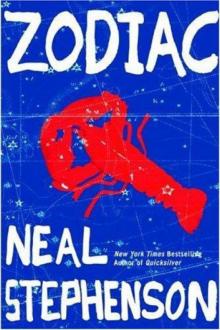 Zodiac: The Eco-Thriller
Zodiac: The Eco-Thriller The Mongoliad: Book One
The Mongoliad: Book One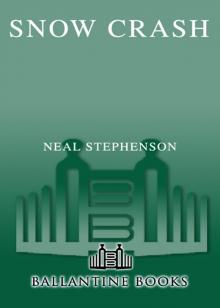 Snow Crash
Snow Crash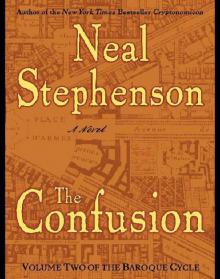 The Confusion: Volume Two of the Baroque Cycle
The Confusion: Volume Two of the Baroque Cycle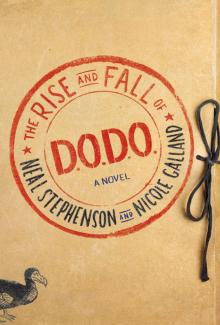 The Rise and Fall of D.O.D.O.
The Rise and Fall of D.O.D.O. The Diamond Age: Or, a Young Lady's Illustrated Primer
The Diamond Age: Or, a Young Lady's Illustrated Primer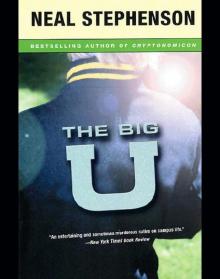 The Big U
The Big U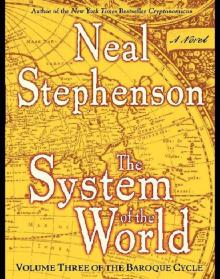 The System of the World: Volume Three of the Baroque Cycle
The System of the World: Volume Three of the Baroque Cycle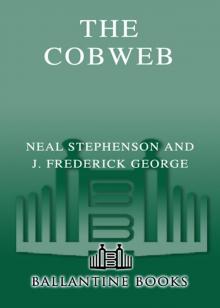 The Cobweb
The Cobweb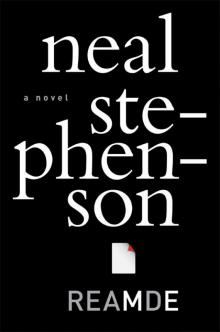 Reamde
Reamde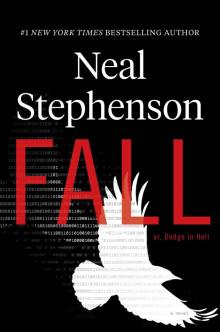 Fall; or, Dodge in Hell
Fall; or, Dodge in Hell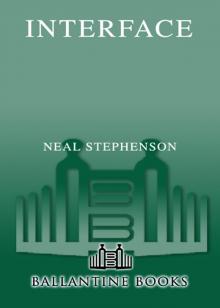 Interface
Interface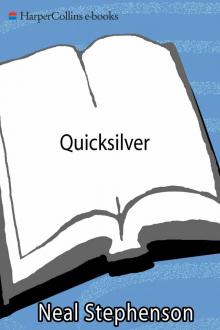 Quicksilver
Quicksilver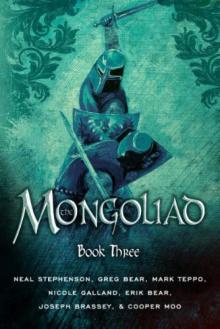 The Mongoliad: Book Three
The Mongoliad: Book Three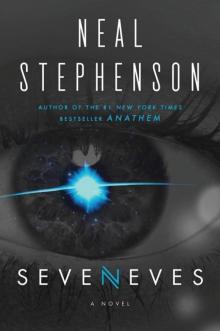 Seveneves
Seveneves Atmosphæra Incognita
Atmosphæra Incognita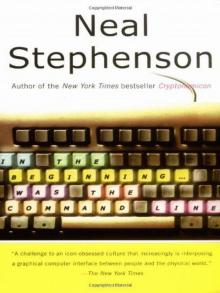 In the Beginning...Was the Command Line
In the Beginning...Was the Command Line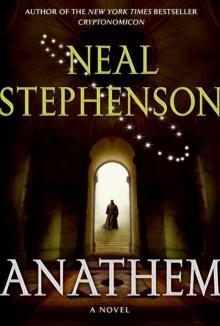 Anathem
Anathem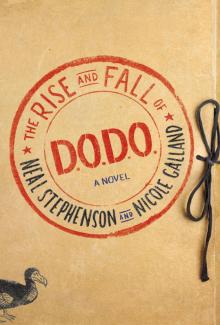 The Rise and Fall of D.O.D.O.: A Novel
The Rise and Fall of D.O.D.O.: A Novel The Mongoliad: Book Two
The Mongoliad: Book Two Diamond Age or a Young Lady's Illustrated Primer
Diamond Age or a Young Lady's Illustrated Primer THE System OF THE WORLD
THE System OF THE WORLD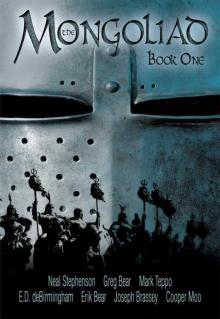 The Mongoliad: Book One tfs-1
The Mongoliad: Book One tfs-1 Some Remarks: Essays and Other Writing
Some Remarks: Essays and Other Writing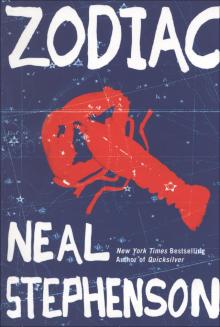 Zodiac
Zodiac Spew
Spew The Baroque Cycle: Quicksilver, the Confusion, and the System of the World
The Baroque Cycle: Quicksilver, the Confusion, and the System of the World The Diamond Age
The Diamond Age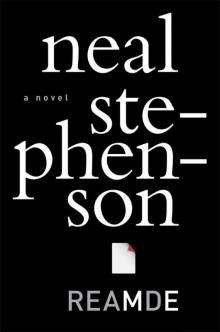 Reamde: A Novel
Reamde: A Novel In the Kingdom of Mao Bell
In the Kingdom of Mao Bell Mother Earth Mother Board
Mother Earth Mother Board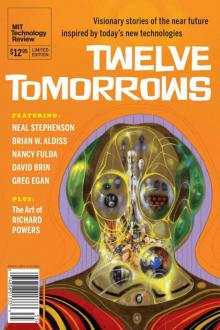 Twelve Tomorrows - Visionary stories of the near future inspired by today's technologies
Twelve Tomorrows - Visionary stories of the near future inspired by today's technologies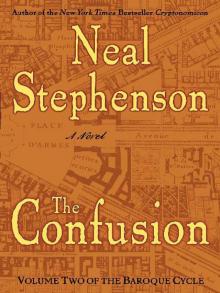 The Confusion
The Confusion The Great Simoleon Caper
The Great Simoleon Caper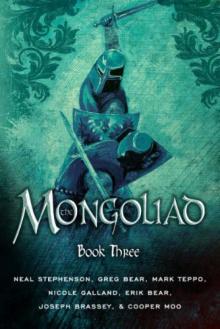 The Mongoliad: Book Three tfs-3
The Mongoliad: Book Three tfs-3